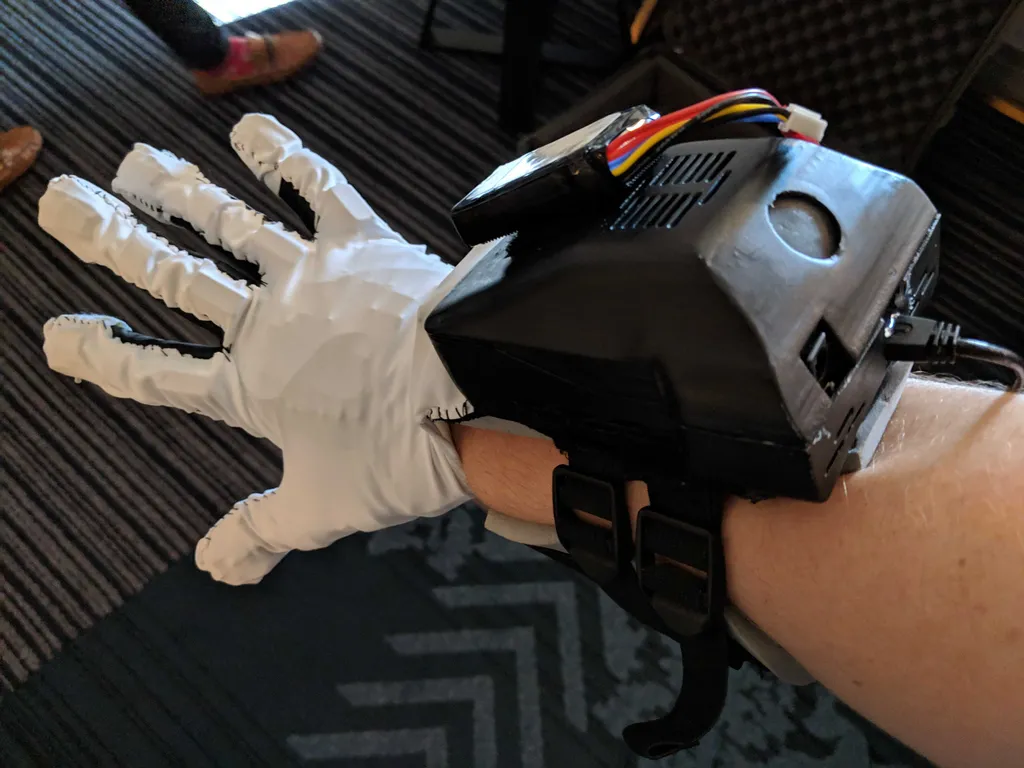Last year at CES 2018 one of my favorite demos was when I met with Craig Douglass from Contact CI and tried out their haptic glove dubbed the Maestro. It was still very much a work-in-progress device with exposed wires sticking out the back and no real glove-like casing around it all. Some people probably thought it looked unrefined and unfinished, but it also had a charming steampunk aesthetic that I was totally onboard with.
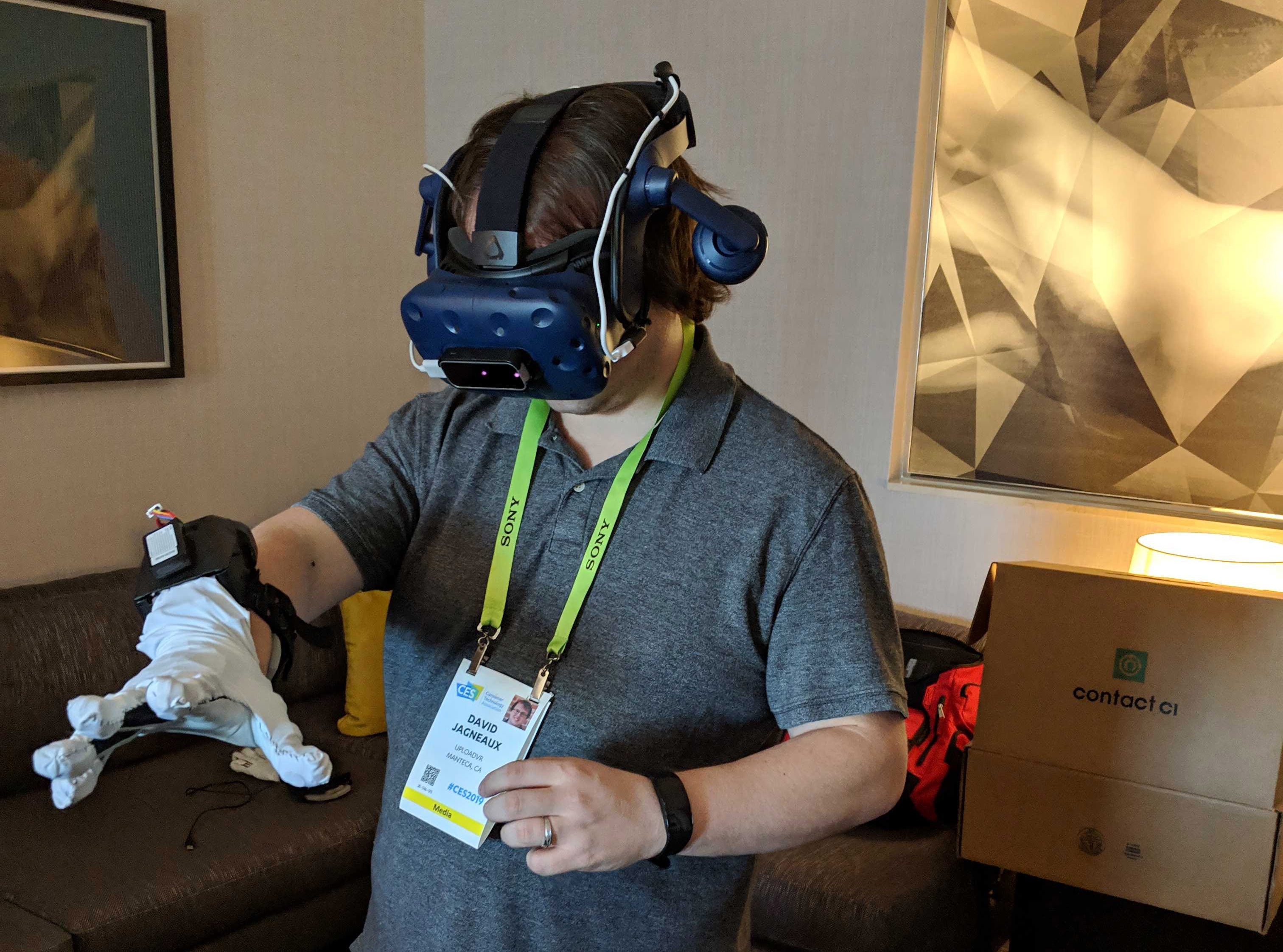
This year it’s starting to look like a nearly finished product. They’ve got a white glove that encapsulates your hand while you’re wearing it and hides all of the motorized tendons and electronics. On your wrist is where the motor sits, along with the battery, strapped onto your forearm to power the unit. Each finger has a cap at the end and once you’re wearing it and turn it on, you can feel it tense up and start to move. It’s the closest I’ve ever gotten to feeling like some sort of cyborg.
What sets the Contact CI glove apart from other gloves that might just track your fingers or even HaptX which provides some haptic feedback, tension, and pressure points in your hand via a pneumatic suitcase device that’s attached to relatively bulky gloves, is that Contact CI is able to semi-accurately simulate tension with a relatively small form factor through its wrist-mounted motor. What I mean by that is when I reach out with my hand and press a button in VR while wearing this glove, it’s not just that my finger is tracked and maybe I feel a little vibration to let me know I pressed it. That’d be great, but this is more than that. The motor in the glove pulls on the individual tendon that extends down the length of that finger in such a way that it’s fooling your brain into thinking that you’ve actually touched a solid surface and it gives you a satisfying amount of resistance.
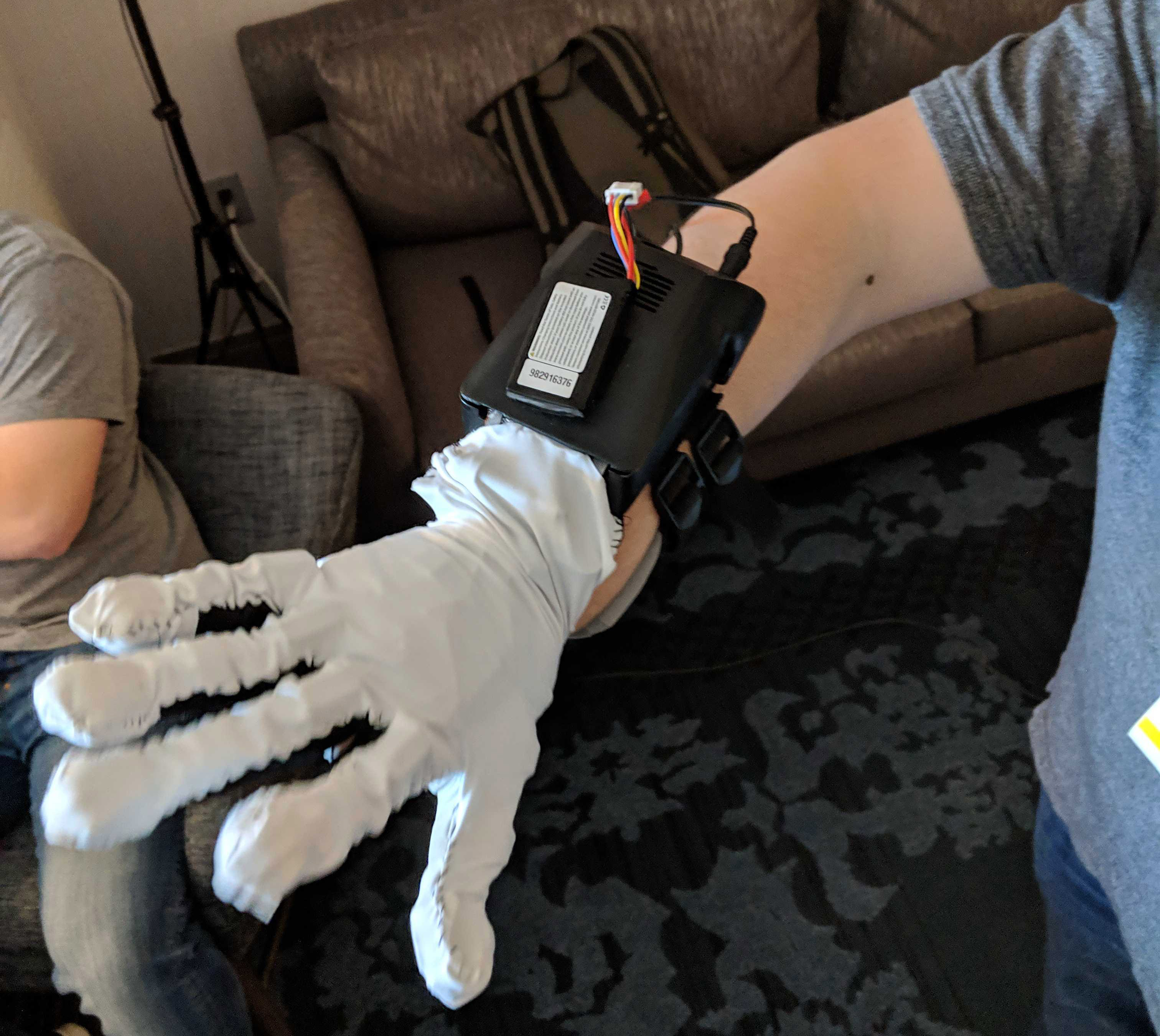
At CES 2019 they had two small demos to show it off. First was a panel full of various buttons waiting for me to press them. I tried each finger to see if the resistance would work universally and it definitely did. For the actual hand and finger tracking they were using a Leap Motion sensor which is neat, but not very accurate. When they deliver their glove to clients it uses either a Vive Tracking puck or some other way solution to provide more accurate lighthouse based tracking with a Vive headset.
But using Leap Motion was a neat idea in this case because it allowed me to use both of my hands in VR, one of which wasn’t wearing the glove. I’m used to Leap Motion tracking and am familiar with being able to see my hands but not actually feel anything, so having a direct side-by-side comparison of both features allowed me to see the difference that actual haptics can make in a VR experience.
This was amplified in the second demo. Instead of buttons this demo was a table with a bunch of blocks and balls on it that I could pick up, knock around, and play with. At first I interacted with them using my left hand (no glove) and then did the same thing with my right hand, gloved, to see the difference. The most powerful bit of it all is when I picked up a block with my left hand then touched it with my right. It gave me this bizarre sensation that was almost like my left hand was numb and I couldn’t feel anything when my eyes were saying I should be able to.
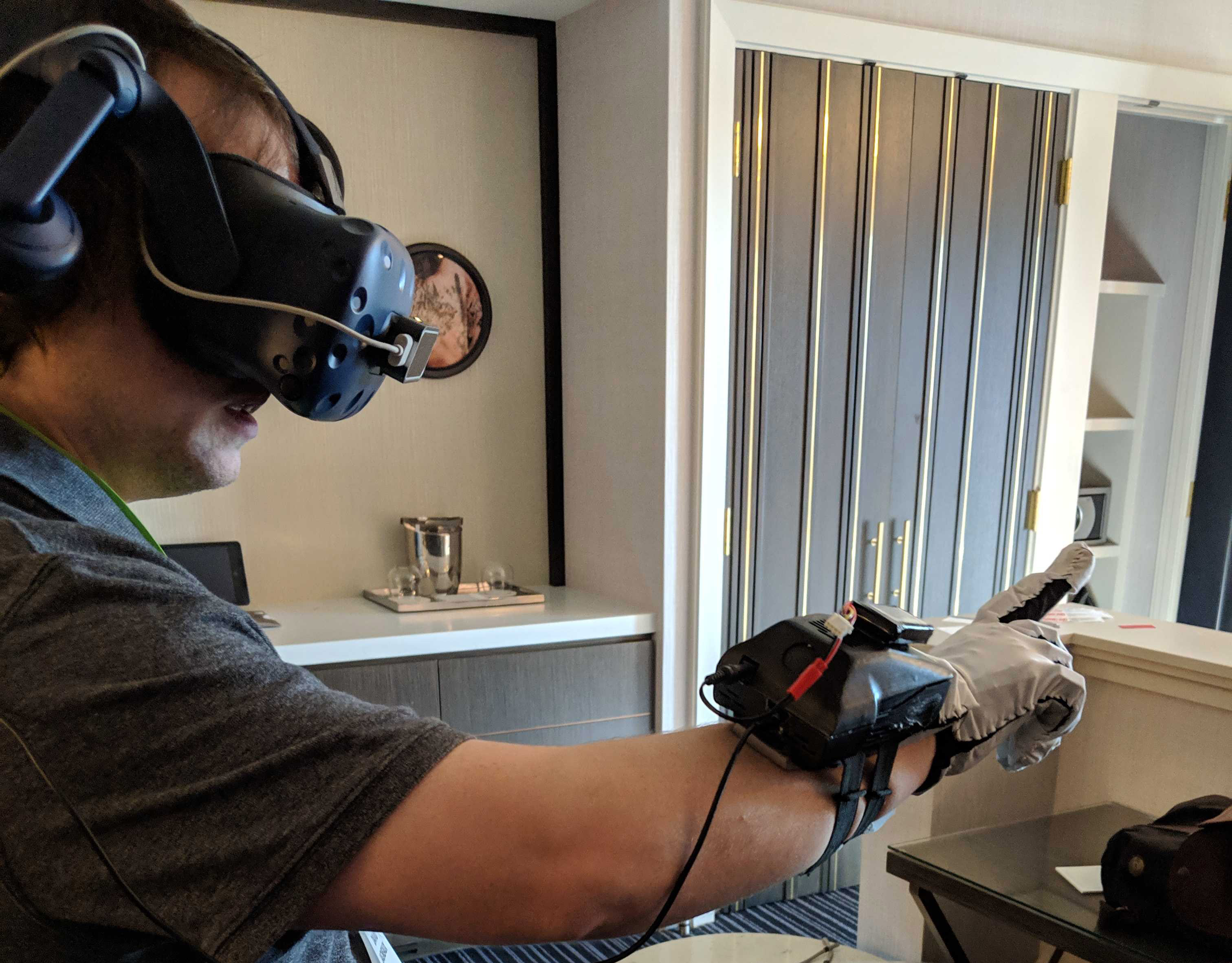
My biggest issue with the Contact CI glove right now from what I’ve seen, other than the lackluster Leap Motion hand tracking, is that the motor on your wrist is actually extremely loud. So loud in fact that when it’s active and pulling on your fingers it takes you out of the experience and ruins the immersion. Each time I touched something it sounded like a tiny little jet engine was about to explode on my wrist and it was super distracting. They tell me that getting the noise down is something that they’re working on.
Gloves like this probably aren’t going to ever become mainstream peripherals for the gaming market, or if they do, it will be a long time before that actually happens. Game developers need to target the lowest common denominator to be profitable which right now means simple motion controllers or even just a standard game pad on PSVR sometimes. But there are tons of enterprise-level applications for this kind of device.
The medical industry, for example, could benefit from haptic feedback when training and simulating things like surgeries to enable the most realistic simulation possible. Another use-case would be a mechanic, someone that can do a simulation on a standard VR platform but if they need to verify that they can reach around underneath something and still feel around and find what they’re looking for then accurate haptics are crucial. Contact CI tells me they’ve actually got units deployed with some business and universities, such as massage schools too.
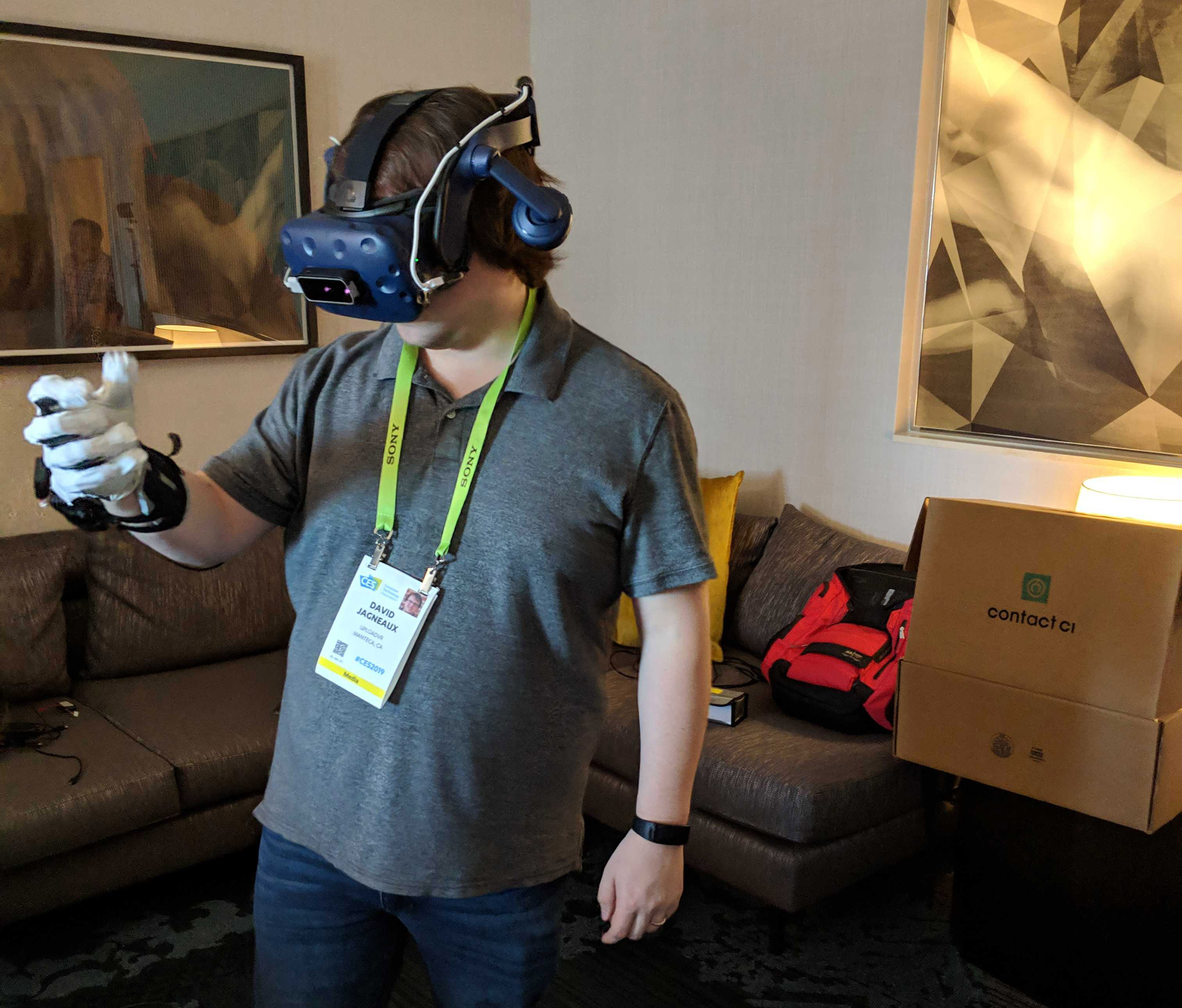
Contact CI has certainly made improvements since I saw their device last a year ago and I’m excited to see how the technology continues to improve. Like a lot of things at CES, this was not a consumer device and it frankly probably won’t ever be, but from a technological standpoint it’s an impressive step forward for haptics and resistance in VR.
For more information on the Contact CI glove you can visit the official website and let us know what you think of the device down in the comments below!
Editor’s Note: More context was added to the section about how Contact CI’s competitor, Haptx, functions.

